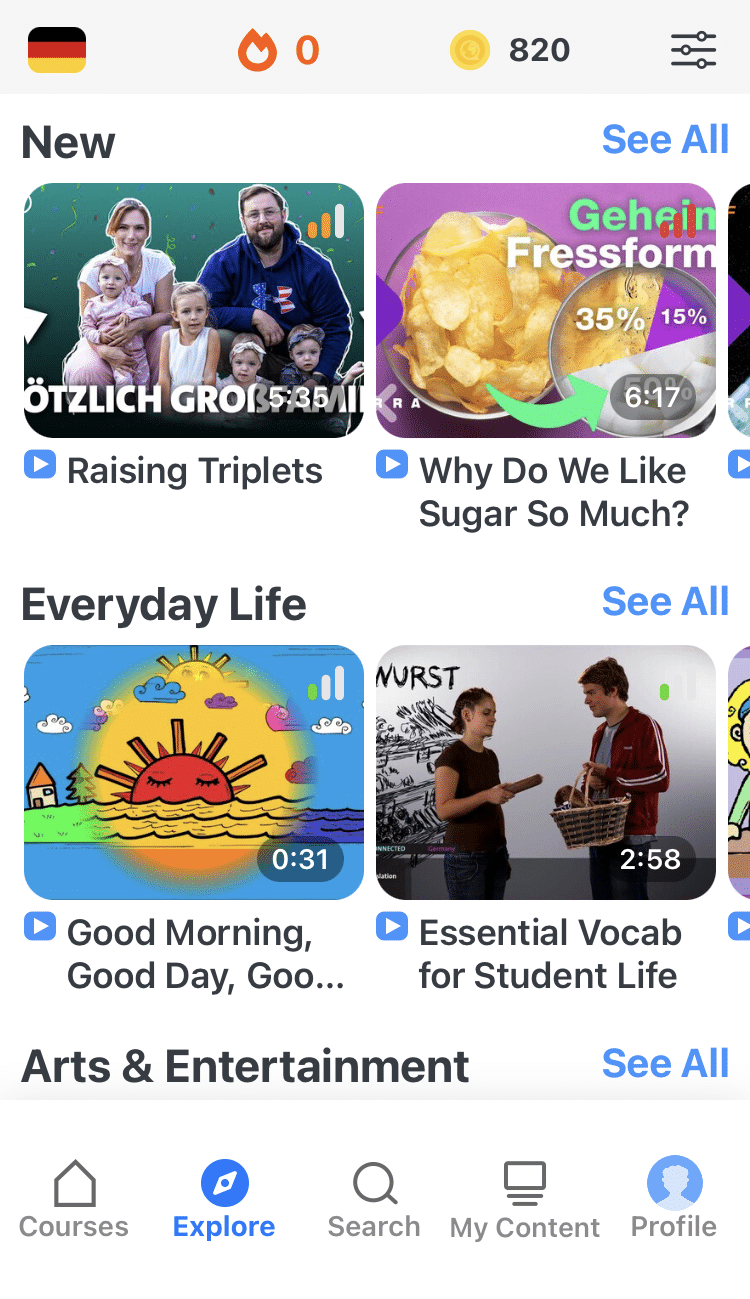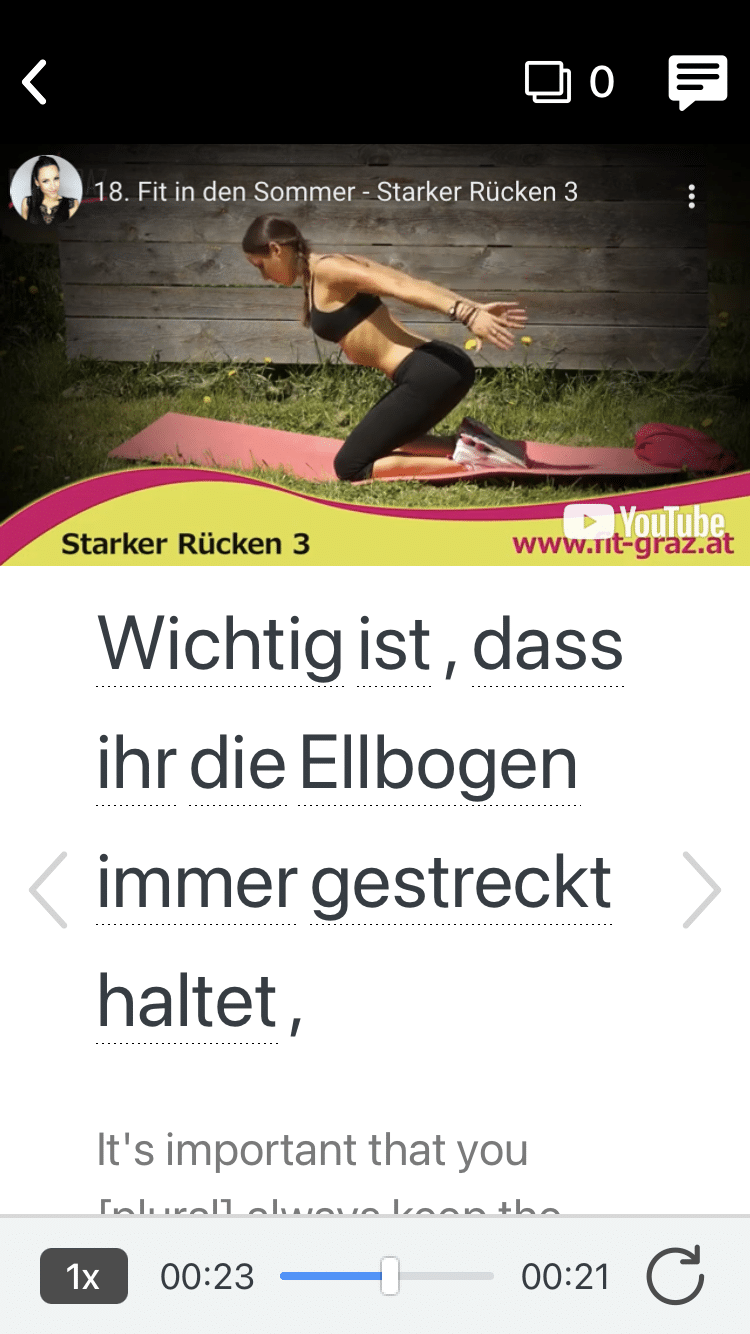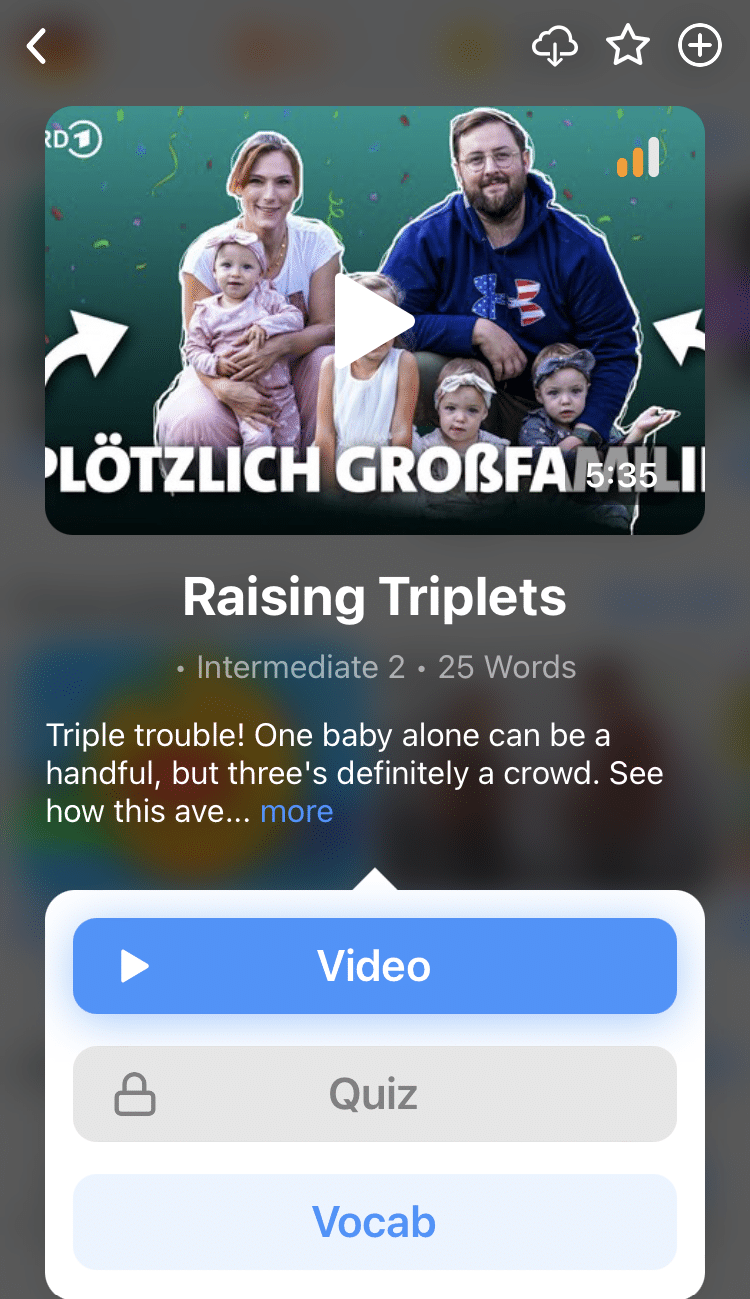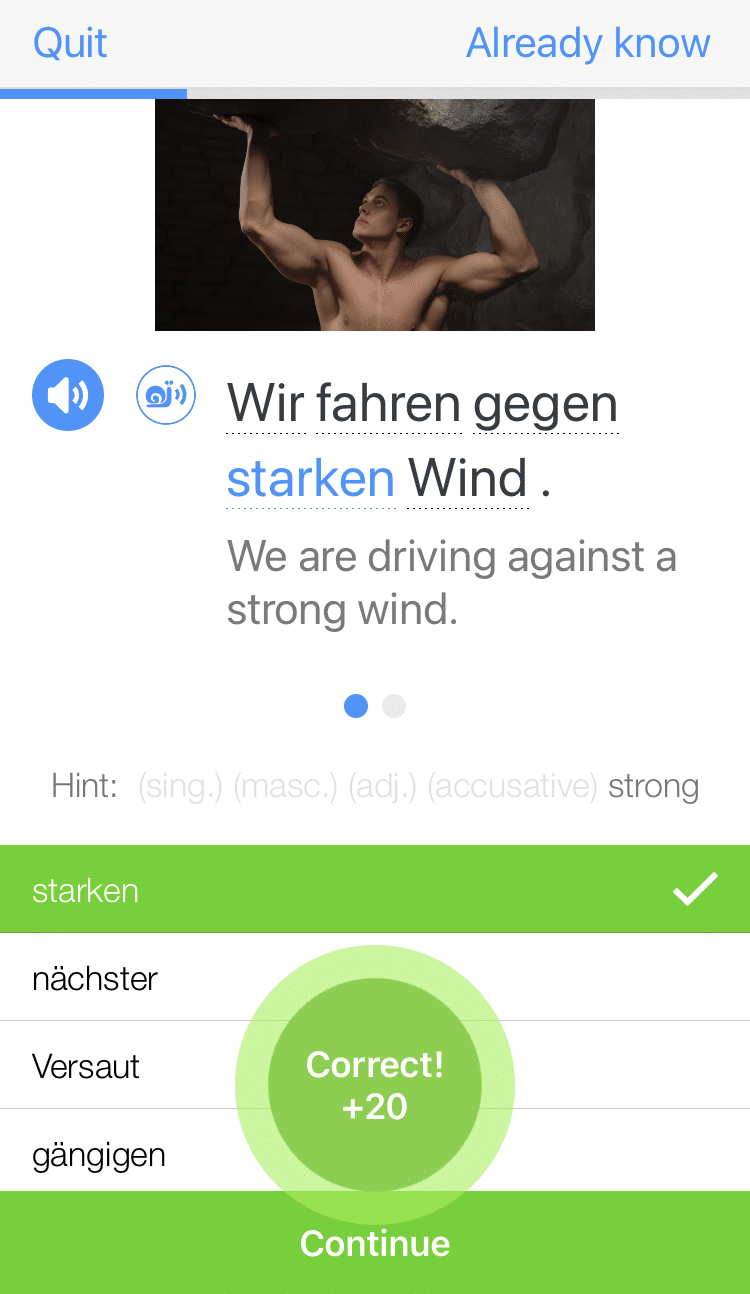
10 Advanced German Compound Nouns and Verbs
German words are like chemical elements.
You can combine two or more of them to make something new.
And when you do, you might find they undergo a surprising transformation!
Plus, like chemical compounds, German compound words can get really complex.
German is dreaded for its seemingly endless Mammutwörter (mammoth words).
I know, I know, another grammatical hurdle is the last thing you need!
There are already a lot of those to overcome before you achieve fluency in German.
You’ve got word order, adjective endings and the feared subjunctive.
But in theory, compound words shouldn’t be that big of a deal. In fact, they should be really fun.
So let’s move past theory and start putting these epic words into practice!
Your reaction may be better than you think.
Download: This blog post is available as a convenient and portable PDF that you can take anywhere. Click here to get a copy. (Download)
Contents
- What Exactly Are Compound Words?
- How to Build Compound Words
- Compound Creations: 10 Advanced German Words That Will Blow Your Mind
- 1. Unabhängigkeitserklärungen
- 2. einkaufen gehen
- 3. Siebentausendzweihundertvierundfünfzig
- 4. Schneeeule
- 5. Fallschirmspringerschule
- 6. Nahrungsmittelunverträglichkeit
- 7. Schweinswal
- 8. unternehmen
- 9. Rechtsschutzversicherungsgesellschaften
- 10. Donaudampfschiffahrtselektrizitätenhauptbetriebswerkbauunterbeamtengesellschaft
- And One More Thing...
What Exactly Are Compound Words?
Simply put, compound words are just two or more words stuck together to make a longer one. One annoying feature of these words is that the stems, i.e. the original words, can sometimes have completely different definitions than the final compound.
Just take das Meerschweinschen (guinea pig). The stems are das Meer (sea) and das Schweinchen (little pig). Obviously, a guinea pig is neither a sea nor a little pig. So this just goes to show that you will need to thoroughly learn the meanings of compound words rather than relying on guesswork from just looking at the stems.
How to Build Compound Words
There are a few things to remember when building a compound word.
The final stem dictates whether the word is a noun or a verb. So compare ausbrechen (to break out) with der Ausbruch (the breakout). As the former’s last stem, brechen, is the verb “to break,” the final compound word keeps this movement and remains a verb. However, Ausbruch remains a noun, just like der Bruch (break).
Numbers are always written as compound words. This is completely different from how we do things in English—we keep each stem separate. For example, “four hundred and twenty-four”…but we’ll go into more detail about numbers later on in this post!
When you’re joining together a whole load of words of different genders, you might think it’ll be tricky to decide which gender the new word should be. Thankfully, there’s one rule that takes care of this: The final stem in the word decides the gender.
So, in the case of das Bananenbrot (banana bread), the compound is a neuter word and takes das. This is because the final stem, brot (bread), is neuter, so it doesn’t matter that Banane is plural here and takes die when it is a standalone word.
But wait—what about that extra “n” that mysteriously pops up in between Banane and Brot?
When you’re joining certain words together, you need to add an extra letter, usually just to make the pronunciation easier on your tongue.
Another example is adding an “e” into der Hund and die Hütte to create die Hundehütte (kennel). Unfortunately, there are no strict rules for when you need to add a letter—it’s just something you will pick up on after plenty of practice!
You can also internalize these by watching more German media and immersing in the language.
FluentU takes authentic videos—like music videos, movie trailers, news and inspiring talks—and turns them into personalized language learning lessons.
You can try FluentU for free for 2 weeks. Check out the website or download the iOS app or Android app.
P.S. Click here to take advantage of our current sale! (Expires at the end of this month.)
Compound Creations: 10 Advanced German Words That Will Blow Your Mind
Some compound words are hilariously long. However, it’s important to understand how they work—even the more common ones. This list is a sample of all types of different compound words, from ones made up of an insane chain of letters, to the simple ones you’ll be faced with in everyday German.
1. Unabhängigkeitserklärungen
Mark Twain mentions this beast of a word in his book “A Tramp Abroad.“ He notes that if we were to apply the German grammar to the English translation of this word, it would translate as “independencedeclarations.” But, we like to keep things simple in English, so we break the translation down into “independence declarations.“
Much to Twain’s annoyance, however, the Germans will continue to combine die Unabhängigkeit (independence) and die Erklärungen (declarations). Oh look—there’s also a sneakily added “s” in there!
2. einkaufen gehen
Okay, so I know learning how to say you’re “going shopping” is easy peasy from way back in week one of German class, but it’s important to note something about certain German compound verbs. Did you notice the two words above aren’t joined together as one?
Unlike the kinds of compound verbs that are created by adding prefixes such as ab, ent or mit, compound verbs that are made up of two separate verbs stay as two independent words. Even though, technically, they’ve paired up to become a single verb. So watch out!
3. Siebentausendzweihundertvierundfünfzig
Right, back to the big ones. This humongous word could be made so much simpler. All you really have to do is write it as “7254.” But you need to know how to write numbers down as words, because you never know when you might be required to do so; it’ll be useful to know not to write down each compound number as a single word!
This is just a random example of how to create a compound noun for numbers—all numbers should be treated in this way.
4. Schneeeule
No, that’s no typo. There really should be three “e”s altogether in the middle of Schneeeule (snowy owl). After all, we’re putting together Schnee (snow) and Eule (owl). Even though it is quite common to add a letter in the middle of compound words to aid pronunciation, we unfortunately can’t delete a letter just because it makes the word look odd. After all, each letter was originally put there for a reason: If we took an “e” out, it would be tricky to pronounce!
5. Fallschirmspringerschule
This word looks more complicated than it actually is. If you break it down, though, it becomes a lot easier to manage. So, the stems are: der Fallschirm (parachute), der Springer (jumper) and die Schule (school). Now all we have to do is begin to build the word up. If we combine the first two stems to create der Fallschirmspringer, we create the German word for “parachutist.” Then all we need to do is add on Schule to get…parachute school!
6. Nahrungsmittelunverträglichkeit
Speaking of reactions, this word’s important to spot if you suffer from bad ones from eating certain things. The stems are das Nahrungsmittel (food) and die Unverträglichkeit (intolerance). Any guesses on the English translation? Yep, another simple one…it’s just “food intolerance.”
7. Schweinswal
Remember what I said about stem words not necessarily keeping their meaning? Well, here’s a great example of just that. Der Schweinswal is made up of das Schwein (pig) and der Wal (whale). Can you guess what they mean when they pair up? Probably not—the literal translation is obviously “pigwhale” but the word actually means “porpoise”!
8. unternehmen
And here we have another example of switching up meanings, only here you might just be slightly off track. When we join unter (under) and nehmen (to take), you could easily be forgiven for thinking its translation will have something to do with undertakers or taking things under. However, it actually means “to venture” or to “undertake” and is commonly used to refer to business ventures.
9. Rechtsschutzversicherungsgesellschaften
Most of the ridiculously long compound nouns are only found in legal or business German. But this doesn’t mean you’re going to get lucky and completely miss them in everyday German. After all, you never know when you might need some legal advice auf Deutsch. So whenever you’re in need of insurance companies providing legal protection, this is what you’ll Google: Rechtsschutzversicherungsgesellschaften!
10. Donaudampfschiffahrtselektrizitätenhauptbetriebswerkbauunterbeamtengesellschaft
Gulp. The length of this word is just stupid. So stupid that it even has its own Wikipedia page and, according to the 1996 Guinness Book of World Records, was—at a grand total of 79 letters—the longest published German word.
(This word is so stupid long that it caused formatting problems on this post because our template was cutting it off. We had to split it in half just to show it to you!)
You’ll probably never need to know the German word for the association for subordinate officials of the head office management of the Danube steamboat electrical services, but…you do now.
And you could use it to impress your fellow German learners!
Feeling more confident about sticking German words together now? Once you’ve mastered how to create compounds, this is definitely a part of German you can enjoy.
Have fun playing with words!
Download: This blog post is available as a convenient and portable PDF that you can take anywhere. Click here to get a copy. (Download)
And One More Thing...
Want to know the key to learning German effectively?
It's using the right content and tools, like FluentU has to offer! Browse hundreds of videos, take endless quizzes and master the German language faster than you've ever imagine!
Watching a fun video, but having trouble understanding it? FluentU brings native videos within reach with interactive subtitles.
You can tap on any word to look it up instantly. Every definition has examples that have been written to help you understand how the word is used. If you see an interesting word you don't know, you can add it to a vocabulary list.
And FluentU isn't just for watching videos. It's a complete platform for learning. It's designed to effectively teach you all the vocabulary from any video. Swipe left or right to see more examples of the word you're on.
The best part is that FluentU keeps track of the vocabulary that you're learning, and gives you extra practice with difficult words. It'll even remind you when it’s time to review what you’ve learned.
Start using the FluentU website on your computer or tablet or, better yet, download the FluentU app from the iTunes or Google Play store. Click here to take advantage of our current sale! (Expires at the end of this month.)







